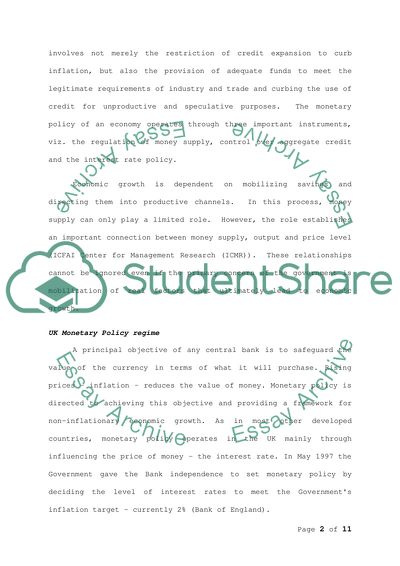Cite this document
(“UK Monetary Policy Regime Essay Example | Topics and Well Written Essays - 2500 words”, n.d.)
UK Monetary Policy Regime Essay Example | Topics and Well Written Essays - 2500 words. Retrieved from https://studentshare.org/macro-microeconomics/1712285-discuss-and-evaluate-the-current-monetary-policy-framework-in-the-uk-and-critically-examine-the-recent-interest-rate-decisions-by-the-bank-of-england
UK Monetary Policy Regime Essay Example | Topics and Well Written Essays - 2500 words. Retrieved from https://studentshare.org/macro-microeconomics/1712285-discuss-and-evaluate-the-current-monetary-policy-framework-in-the-uk-and-critically-examine-the-recent-interest-rate-decisions-by-the-bank-of-england
(UK Monetary Policy Regime Essay Example | Topics and Well Written Essays - 2500 Words)
UK Monetary Policy Regime Essay Example | Topics and Well Written Essays - 2500 Words. https://studentshare.org/macro-microeconomics/1712285-discuss-and-evaluate-the-current-monetary-policy-framework-in-the-uk-and-critically-examine-the-recent-interest-rate-decisions-by-the-bank-of-england.
UK Monetary Policy Regime Essay Example | Topics and Well Written Essays - 2500 Words. https://studentshare.org/macro-microeconomics/1712285-discuss-and-evaluate-the-current-monetary-policy-framework-in-the-uk-and-critically-examine-the-recent-interest-rate-decisions-by-the-bank-of-england.
“UK Monetary Policy Regime Essay Example | Topics and Well Written Essays - 2500 Words”, n.d. https://studentshare.org/macro-microeconomics/1712285-discuss-and-evaluate-the-current-monetary-policy-framework-in-the-uk-and-critically-examine-the-recent-interest-rate-decisions-by-the-bank-of-england.


